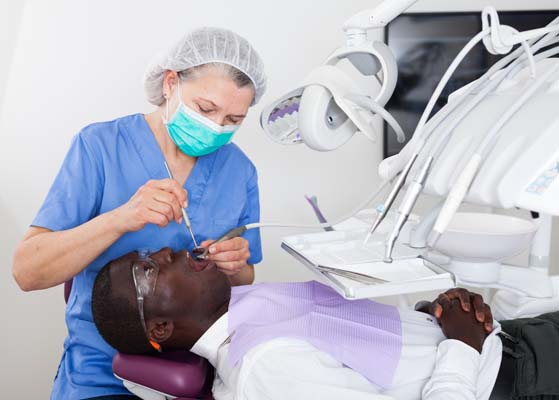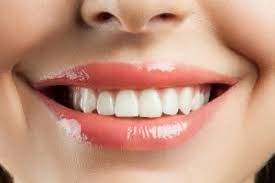Health
Foot & Leg Massage at Preme Spa: The Key to Relaxation and Rejuvenation

Introduction
Do you need to come out and relax after a long day? The remedy is a foot and leg massage at Preme Spa. If you’re in Bangkok on a holiday or if you’re a resident, the experience of a rip-roaring massage in Bangkok can provide the most exquisite relaxation with all the noise that goes with it. In this blog, we will be focusing on how a foot and leg massage at Preme Spa can act as a mantra to your relaxation and overall well-being.
Foot & Leg Massage: Why It’s Good For You
Foot and leg massages have held therapeutic properties for quite some time. As the primary weight-bearing parts of our body, the feet and legs tend to accumulate tension and fatigue quickly. That’s right: a good massage does wonders with relieving stress, reducing pain, and increasing circulation.
- Alleviates stress and tension.
Stress relief is one of the major advantages of foot and leg massage. Gentle pressure and calming techniques are used throughout the session to quiet the mind and enable your body to relax. The massage zeroes in on essential pressure points that help alleviate the tension that accumulates over the course of the day.
- Boosts Blood Circulation:
As we do our daily routine, blood circulation may weaken, especially in the lower limbs. A foot and leg massage encourages blood circulation, which allows oxygen and nutrients to reach muscles and tissues faster. This can increase energy levels and promote vitality.
- Reducing Muscle Aches and Pain
The legs might become sore from long hours of standing or walking, as well as exercising. A foot and leg massage reaches deep into the muscles and helps reduce soreness, making it the perfect choice for people that have problems with their legs and muscle pain. Furthermore, the massage is also aimed at the calves and the thighs, releasing any tension that can cause stiffness and cramps.
- Improving Sleep Quality
A foot and leg massage is also an excellent occasion to relax and prepare for a good sleep. Since the massage relaxes the body and mind and makes them more willing to rest, it will ensure a better next-day experience and feeling of being rested.
Why Choose Preme Spa in Bangkok for a Massage?
Preme Spa is one of the top spas in Bangkok, designed as a haven for relaxation and wellness. Many people find it a break from the city pressure and a welcoming place to restore energy and inner peace. The following are the reasons for which Preme Spa is the place to get a foot and leg massage:
- Professional Therapists
Your massage is in the hands of skilled therapists who are trained in various types of massage and have mastered the art of providing just the right amount of pressure and the best ways to use it during your foot and leg massage.
- Peaceful and Natural Atmosphere
The spa’s ambiance is very important for you to enjoy and be relaxed during your time here. The soft light, subtle music and scents, and the calming atmosphere invite you to relax and forget about your routines.
- Customized Treatments:
Every individual has their own needs, which is something Preme Spa knows all too well. That’s why they provide personalized treatments that address your specific concerns. Leaving you to either discuss your sore spots or to ask for a general relaxation massage; the team is ready to tailor the session to suit your preferences.
- Location in Bangkok : Convenient
Conveniently located in the middle of Bangkok, Preme Spa is easily accessible and perfect for local residents and visitors alike. Whether you’re stopping by after a day of sightseeing or as part of your wellness regimen, Preme Spa provides a soothing getaway in the city.
The Benefits of a Foot & Leg Massage for Your Wellbeing
There are a number of health benefits of doing foot and leg massages and making them a part of your wellness regime. Regular sessions will also help prevent fatigue, maintain good posture, and decrease the risk of developing leg-related problems. It is a commitment toward your physical and mental health that will pay off every moment.
Experience the benefits of immersive life, after a long day of walking around Bangkok, the brilliance of Preme Spa helps rejuvenate your feet and legs with a fantastic foot and leg massage, this will significantly increase your quality of life. It’s a no brainer in order to recharge both body and mind — you always come out feeling much more refreshed.
Conclusion
And if you want to unwind and recharge, a foot and leg massage in Bangkok at Preme Spa will do the trick. Transformative and Rejuvenating: the best spa in Bangkok for rejuvenating body and mind, Preme Spa is highly recommended. Enjoy a worthy massage in Bangkok that will at the same time not only relieve stress, but to promote better health and wellbeing. So come get them all at Preme Spa today, Don’t miss out on this ticket to relaxation!
Health
How CPAs Offer Strategic Guidance To Executives

You need clear guidance to navigate complex business decisions. Certified Public Accountants (CPAs) stand ready to assist you. Their role isn’t just about crunching numbers. They offer strategic advice that can reshape your company’s future. For executives, this means getting insights that drive smart choices. When you’re dealing with real estate accounting in Alpharetta, CPAs bring tailored solutions. They understand both local nuances and broader market trends. This ensures you’re making informed moves. A CPA’s expertise includes risk assessment and financial planning. They help you sidestep potential pitfalls while boosting growth. By leaning on their knowledge, you gain a crucial partner in decision-making. You’re not just surviving; you’re thriving in a competitive environment. It’s this kind of strategic guidance that allows your business to flourish. With a CPA by your side, you’re better equipped to face challenges head-on and seize opportunities.
The Role of Strategic Guidance
Strategic guidance is crucial in ensuring that executives make sound decisions. A CPA provides insights that steer your business toward success. By analyzing financial data, CPAs identify trends and opportunities. They help you plan for short-term and long-term goals. As an executive, you need a clear view of your financial landscape. CPAs give you that perspective through detailed reports and clear recommendations.
Financial Planning and Analysis
Financial planning is not just about budgeting. It’s about understanding where your business stands and where it needs to go. CPAs offer a comprehensive analysis of your financial health. This includes cash flow management and resource allocation. They provide a roadmap for achieving financial stability. With this guidance, you make informed decisions that align with your strategic objectives.
Risk Management
Every business faces risks. CPAs help identify these risks early. They offer strategies to mitigate them effectively. Whether it’s market volatility or operational challenges, CPAs provide solutions that protect your interests. They ensure you’re prepared for unexpected events. This proactive approach minimizes disruptions and keeps your business on track.
Data-Driven Decision Making
In today’s digital age, data is valuable. CPAs use data analytics to provide clear insights. They analyze trends and patterns to guide your decisions. This data-driven approach boosts confidence in your choices. You’re not just guessing; you’re making informed decisions based on solid evidence.
Cost-Benefit Analysis: CPA vs. No CPA
| Factor | With CPA | Without CPA |
|---|---|---|
| Financial Insights | In-depth analysis, strategic planning | Limited understanding, potential oversights |
| Risk Management | Proactive identification, mitigation strategies | Reactive, increased exposure to risks |
| Resource Allocation | Optimized, aligned with goals | Potential misallocation, inefficiencies |
Tax Planning
Tax laws can be complex. CPAs navigate these laws to ensure compliance. They help you take advantage of deductions and credits. This reduces your tax liability and increases your bottom line. By planning ahead, CPAs make sure you’re prepared for tax season, avoiding surprises and penalties.
Collaboration and Communication
CPAs work closely with you and your team. They facilitate communication between departments. This collaboration ensures everyone is aligned with the company’s goals. By fostering a culture of transparency, CPAs create a cohesive, informed workforce.
Conclusion
CPAs are more than accountants. They are strategic partners who guide you towards success. Through financial planning, risk management, and data-driven analysis, they help you make informed choices. A CPA provides the clarity you need to navigate complex situations. With their expertise, you gain a competitive edge. The strategic guidance of a CPA is a valuable asset in achieving your business goals. To learn more about the role of CPAs in business, visit American Institute of CPAs or Accounting Education for additional resources.
Health
How General Veterinarians Provide Peace Of Mind For Families

You want your pets to be happy and healthy. General veterinarians play a key role in achieving that. Their expertise provides peace of mind for families who depend on them for their beloved animals’ well-being. You trust your pets with these professionals who offer necessary care and build lasting relationships. At an Austin animal hospital, you find knowledgeable veterinarians who understand your concerns. They provide preventive care, diagnose problems early, and guide you through treatments. This support ensures that your pets receive the best care possible. Regular check-ups, vaccinations, and health advice help keep your pets safe. When you notice changes in your pet’s behavior, these veterinarians are ready to help. They know the importance of timely care and provide solutions that work. Visiting a general veterinarian becomes part of your routine, bringing comfort and security to your family. You feel reassured knowing your pets are in capable hands.
The Importance of Preventive Care
Preventive care is essential for maintaining your pet’s health. It includes vaccinations, flea and tick prevention, and regular check-ups. A general veterinarian helps you understand what your pet needs to stay healthy. They offer advice tailored to your pet’s specific requirements. At home, you can follow their guidelines to ensure your pet stays safe from common ailments.
Early Diagnosis and Treatment
Pets can’t tell you when they’re unwell, but changes in behavior or appetite might signal a problem. General veterinarians are trained to identify issues early. Early diagnosis means more effective treatment and a faster recovery. This proactive approach is crucial for your pet’s long-term health and happiness.
Building Trust and Relationships
Regular visits to your veterinarian help build trust between you, your pet, and the veterinarian. Over time, your veterinarian becomes familiar with your pet’s history and behavior. This familiarity allows them to detect subtle changes in your pet’s health. You feel at ease discussing concerns and receive advice that suits your specific situation.
Vaccination Schedule
Vaccinations protect your pets from diseases. General veterinarians create a schedule tailored to your pet’s needs. Keeping track of this schedule helps maintain your pet’s health. Here’s a comparison table for common vaccinations:
| Pet Type | Core Vaccines | Frequency |
|---|---|---|
| Dog | Rabies, DHPP | Annually |
| Cat | Rabies, FVRCP | Annually |
Nutrition and Weight Management
Nutrition impacts your pet’s well-being. General veterinarians provide guidance on proper diet and weight management. They consider your pet’s age, breed, and activity level to recommend suitable food options. This advice ensures your pet stays energetic and avoids weight-related issues.
Addressing Behavioral Changes
Behavioral changes can indicate health problems. Veterinarians assess these changes and provide solutions. Whether it’s a new diet or a treatment plan, they help you address these issues effectively. This support ensures your pet remains content and comfortable.
Emergency Services and Expert Advice
In emergencies, general veterinarians offer critical assistance. Knowing you have access to expert care during crises brings peace of mind. Veterinarians provide guidance on handling emergencies and offer resources for further support. For more information on pet emergency preparedness, visit the Ready.gov website.
Conclusion
General veterinarians are invaluable in caring for your pets. They provide preventive care, early diagnosis, and treatment. You trust them with your pets’ health and find comfort in their expertise. Their support ensures your pets live happy, healthy lives. They offer a calm reassurance that your family needs. Remember to schedule regular check-ups and follow your veterinarian’s advice for a healthy pet. By doing so, you contribute to your pet’s well-being and the peace of mind they bring to your home.
Health
How CPAs Use Technology To Improve Financial Accuracy

Technology transforms the way you manage finances. CPAs, like a tax accountant Orlando, use advanced tools to ensure precise financial records. This shift to digital not only saves time but also reduces human errors. Automated systems streamline tasks and provide real-time data that helps CPAs make informed decisions. You benefit from improved accuracy, which is crucial during tax season. Secure cloud storage keeps your financial information protected and accessible. Additionally, AI can predict trends and offer insights, allowing you to plan better. You can trust that with technology, your financial statements are accurate and up-to-date. Many CPAs are adopting this tech-driven approach to serve you better. As a result, you gain peace of mind knowing your finances are in capable hands. Whether it’s managing expenses or preparing reports, technology enhances every step of the process. It’s a reliable way to ensure financial clarity and stability.
Automation in Accounting
Automation plays a key role in transforming accounting tasks. With the help of specialized software, CPAs can automate data entry, invoicing, and payroll. Automation reduces the risk of errors that often occur with manual processes. It also allows CPAs to focus on more important tasks, such as financial analysis. By adopting automation, CPAs can provide you with quicker, more precise results. This efficiency is especially beneficial during busy periods, such as the end of the fiscal year.
AI and Predictive Analytics
Artificial Intelligence (AI) and predictive analytics are becoming common in accounting. AI can analyze large sets of data quickly, providing insights that might be missed by human analysis. Predictive analytics can forecast financial trends, helping you make informed decisions about your financial future. Using AI, CPAs can identify potential risks and opportunities for you. This proactive approach ensures that you are always well-prepared for financial challenges. According to the IRS, accurate forecasting can significantly improve business planning.
Benefits of Cloud Computing
Cloud computing offers numerous advantages for managing financial data. It allows CPAs to store and access your financial information securely from anywhere. This accessibility means that updates and changes can be made in real-time, providing you with the most current information. Furthermore, cloud computing reduces the need for physical storage, saving both space and resources. It also enhances collaboration, allowing multiple users to work on the same data simultaneously.
Comparison: Traditional vs. Technology-Driven Accounting
| Aspect | Traditional Accounting | Technology-Driven Accounting |
|---|---|---|
| Data Entry | Manual, prone to errors | Automated, accurate |
| Data Access | Limited, location-based | Unlimited, cloud-based |
| Decision Making | Based on past data | Data-driven with AI insights |
| Efficiency | Time-consuming | Fast and streamlined |
Cybersecurity Considerations
While technology offers many benefits, cybersecurity is a critical consideration. It is important to ensure that your financial data is protected against cyber threats. CPAs use advanced security measures to safeguard your information. These measures include encryption, multi-factor authentication, and regular security audits. By prioritizing cybersecurity, CPAs ensure that your data remains confidential and secure.
The Way Forward
As technology continues to evolve, CPAs will integrate more advanced tools into their processes. These advancements promise to further enhance accuracy and efficiency. You can look forward to a future where financial management is more reliable and transparent. By leveraging technology, CPAs are equipped to meet your needs more effectively than ever before. For more information on the benefits of technology in accounting, visit Accounting.com.
Embracing technology in accounting transforms the way financial tasks are handled. By automating tasks, utilizing AI, and adopting cloud computing, CPAs provide you with accurate, up-to-date financial information. The shift from traditional methods to technology-driven solutions enhances efficiency and decision-making, offering you peace of mind. Cybersecurity remains a priority, ensuring your financial data is safe. With these advancements, you can manage your finances with confidence and clarity.
-

 Health1 week ago
Health1 week ago5 Benefits Of Regular Follow Ups During Orthodontic Care
-

 Health1 week ago
Health1 week agoThe Role Of Preventive Dentistry In Avoiding Complex Procedures
-

 Travel3 days ago
Travel3 days agoeSIM Revolution: Staying Connected Across Middle East and Asia Without Breaking the Bank
-

 Health3 days ago
Health3 days agoTeaching Kids Good Oral Hygiene With Family Dental Support
-

 Health3 days ago
Health3 days agoHow General Veterinarians Provide Peace Of Mind For Families
-
All6 days ago
Mega888 Malaysia: The Psychology Behind Winning and Responsible Play
-

 Health3 days ago
Health3 days agoWhy Dental Cleanings Are Essential At Animal Clinics
-

 Health3 days ago
Health3 days agoHow Pet Dental Care Prevents Systemic Illness


